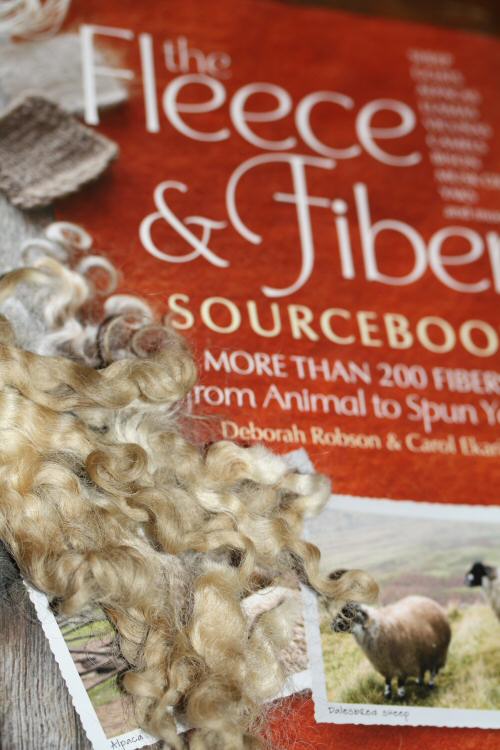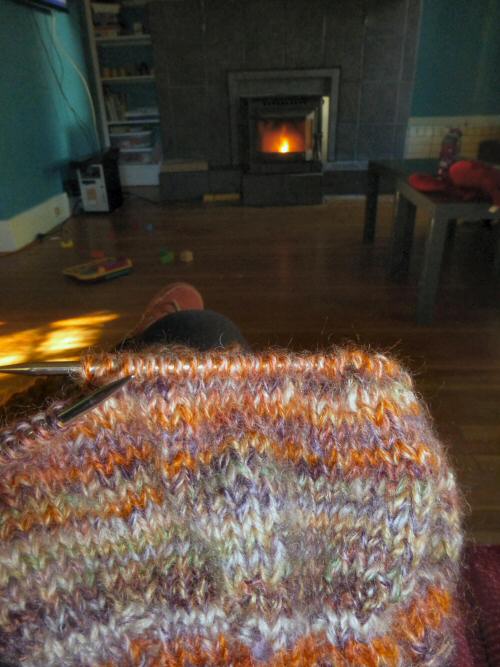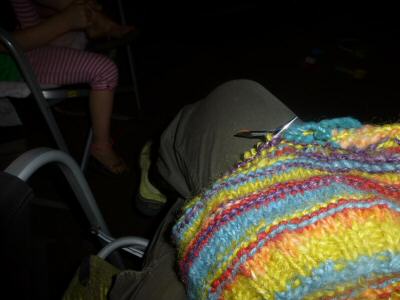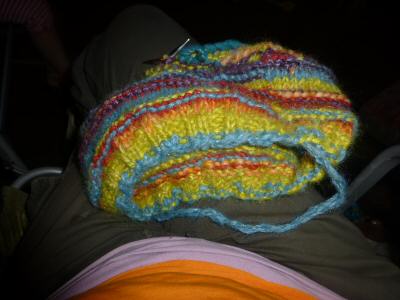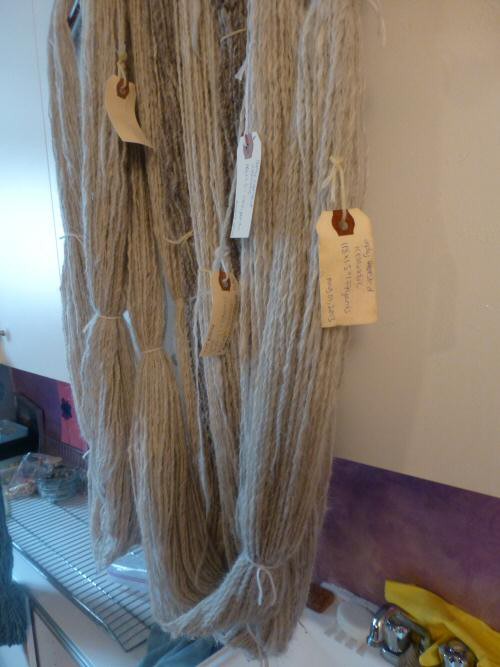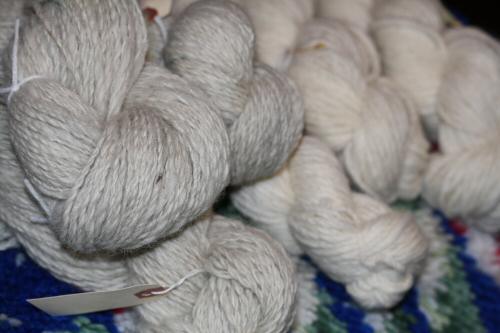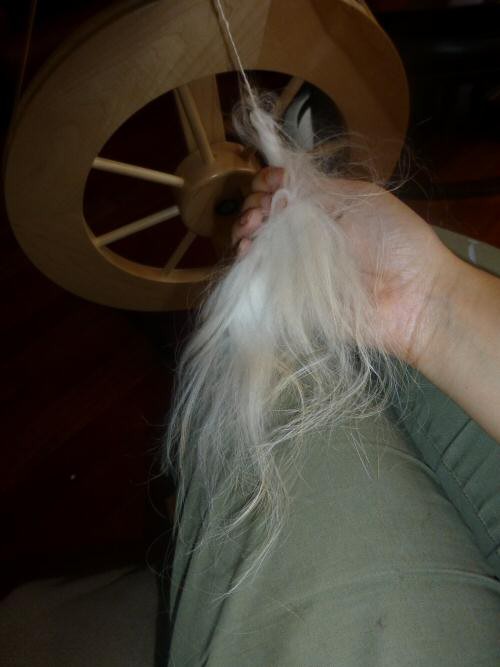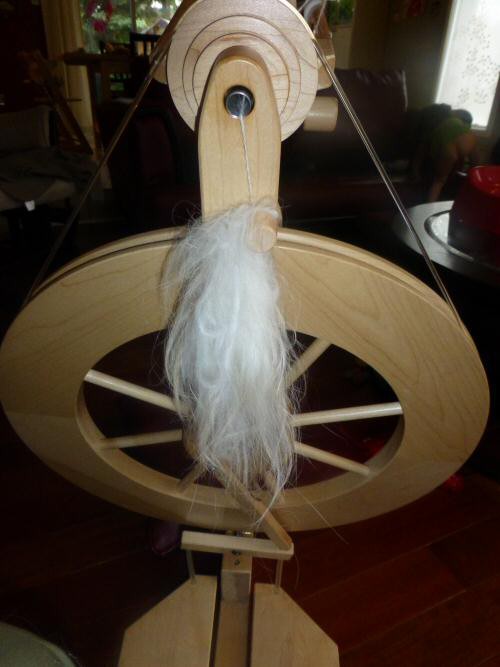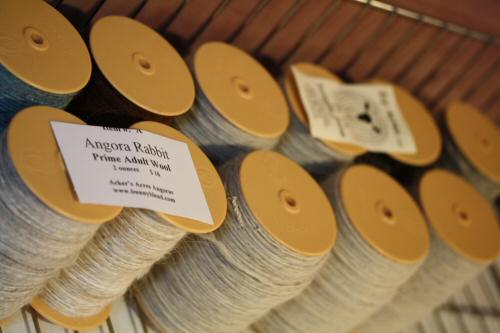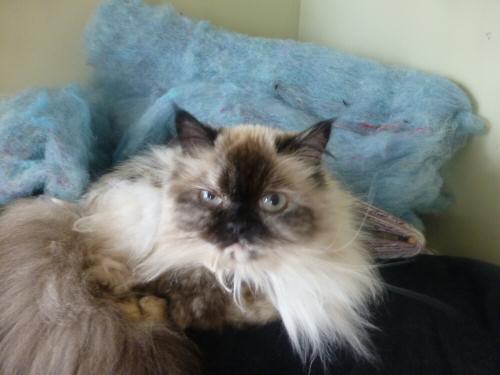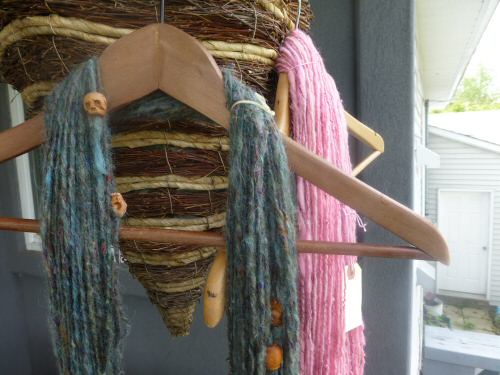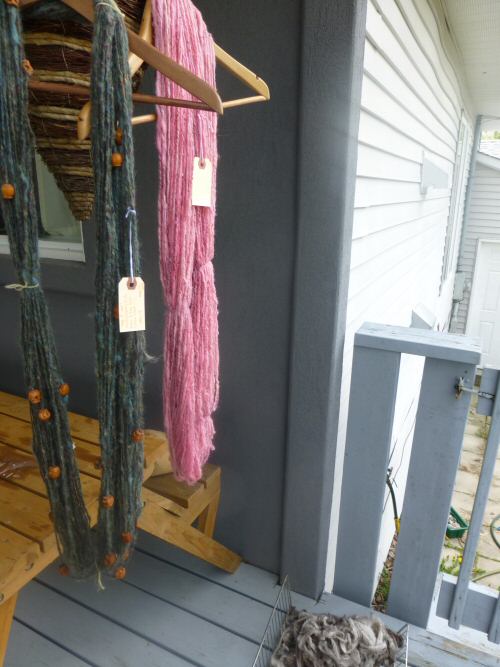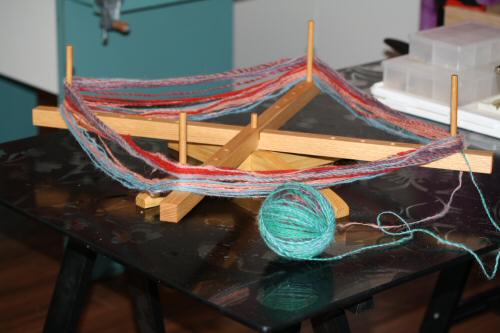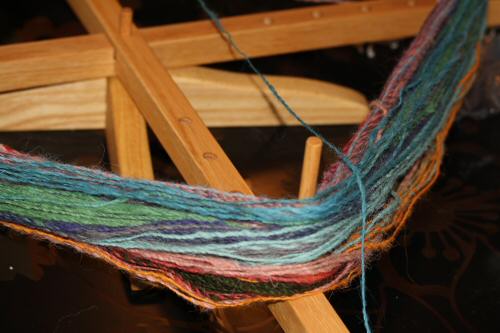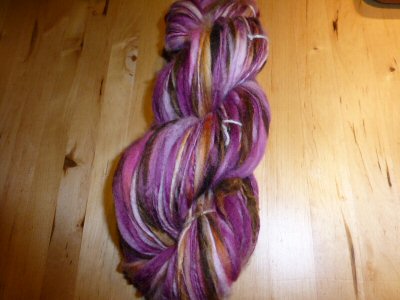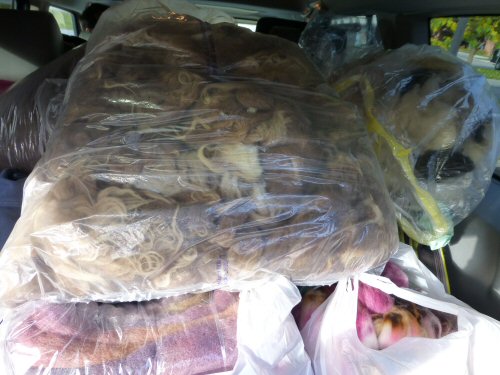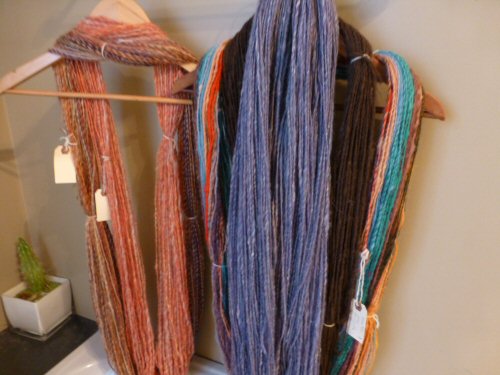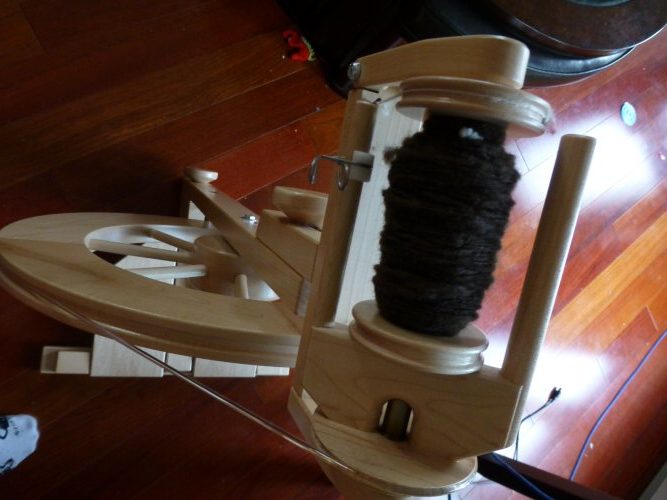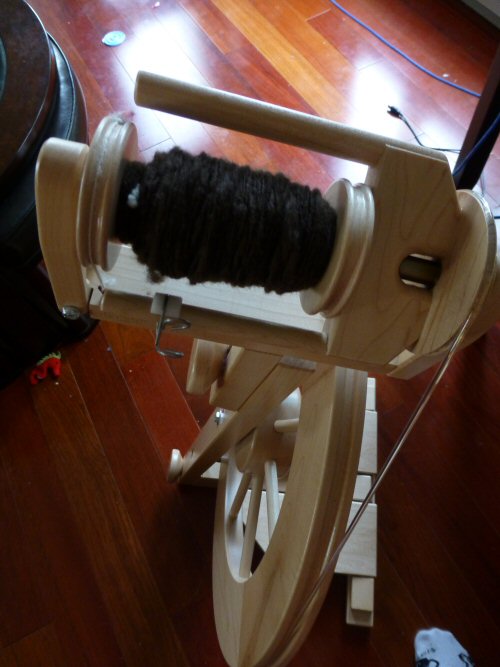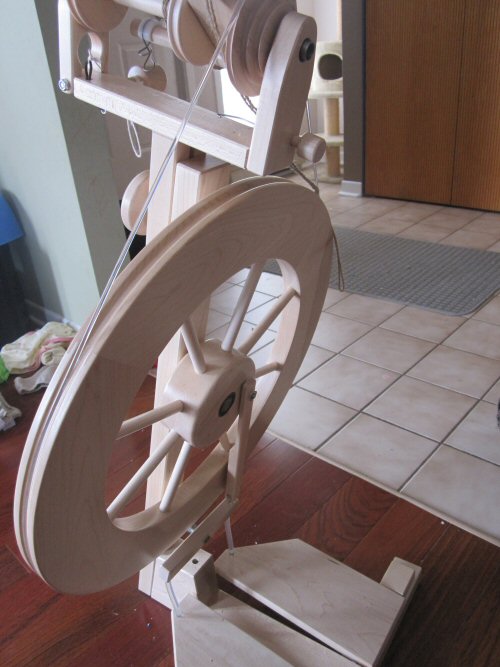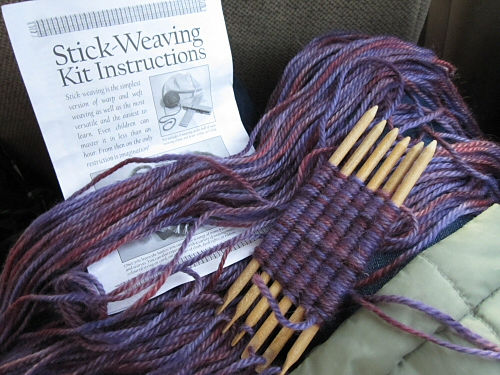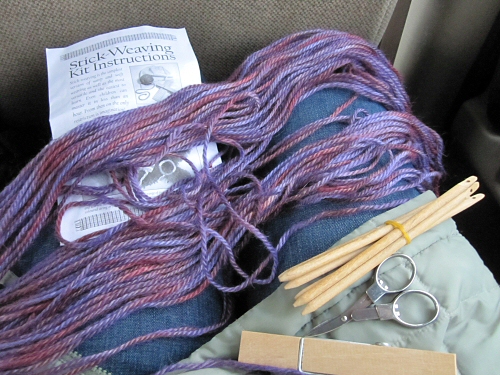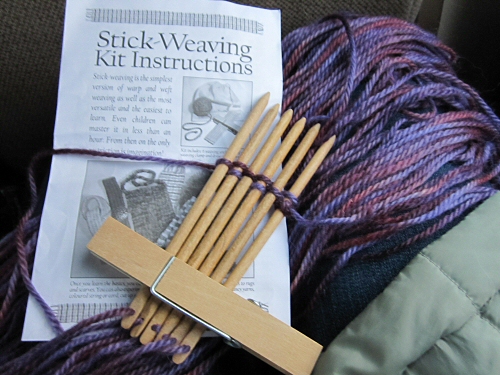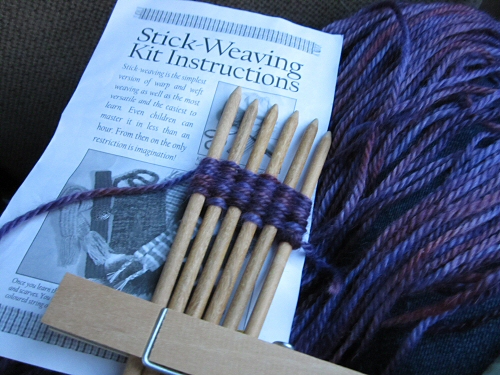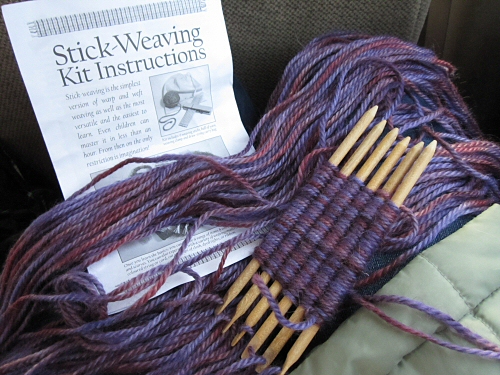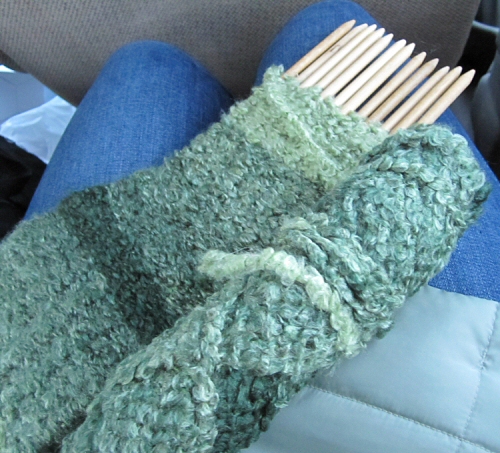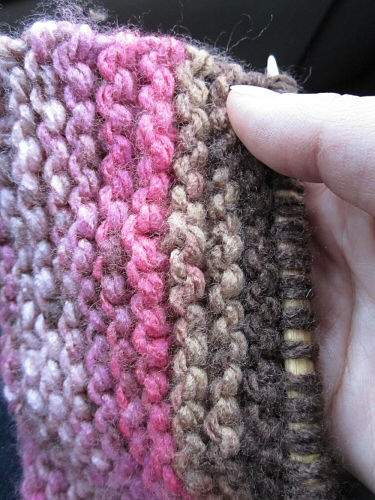
With the stick weaving mastered in no time flat, it was time to try my hand at the needles. Knitting is another skill on my list of things to learn in 2011.
So on this same trip, I brought along with me some size 7 needles and a great skein of wool I had picked up at the Vermont Wool Show. I should mention that I have knitted before – when I was about 10 years old. I don’t remember actually completing a project, just casting on/off and doing what I know now is the basic garter stitch. I can’t even remember how got to doing it – if it was a kit as a gift, if someone showed me or I just figured it out somehow, but I can picture the plastic knitting needles. In any event I don’t remember a thing about how to do it, so to me this was like my fist time. 🙂
The thing with me is, I simply do not learn in a conventional manner. I find books and instructions rather confusing as they are too one dimensional, and videos I never seem to be able to keep up with or I am too concerned with copying exactly what the person is doing in the video rather than actually learning. In other words, take the video away, and I freeze. If my work doesn’t look like that in the book or my technique doesn’t go as smoothly as the person in the video, I get discouraged. This is probably due to anxiety of my conventional schooling: text books are intimidating & due to the learning anxiety I simply regurgitated what I was “taught” in school – nothing truly retained. I guess that’s why with my jewelry making I’d rather just figure it out for myself than be taught…regardless of how many hours extra it takes me…I can be stubborn like that!
So after reading through & studying diagrams from an ebook on my Nook, and watching a video on our Tab – I felt I had somewhat of a foundation of what I was supposed to do – so I threw them to the wayside and practiced myself.
First of all I loved the size 7 needles & found them easy to maneuver – I can see why this size was recommended to me for a beginner. But, I really wanted to work with a larger size while I was learning. Smaller needles = smaller stitches so my work was progressing really slowly. I wanted to see some results fast just to keep me motivated. I also realized I needed to get some cheap yarn for practicing. I kept unraveling the good stuff if it wasn’t perfect…I just felt like I was wasting it. As with jewelry making, it felt like leaping straight into the fine silver wire when you don’t even know how to wire wrap yet… 🙂
So the next day I was off to the craft store. I bought a pair of size 10 bamboo needles & some yarn that was on sale for about $2. The instructions for the project on the yarn called for a larger needle than a size 10 so it had the “fatness” I desired to see larger stitching.
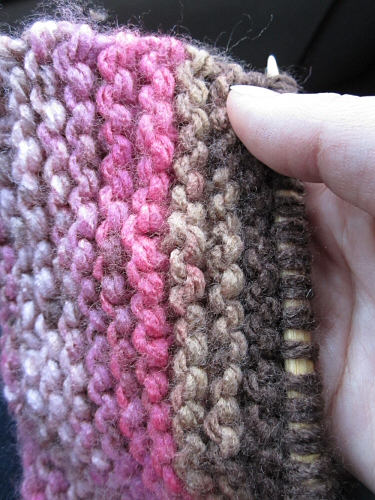
My very first knitted – anything. It’s a simple cast on & garter stitch. Believe me there are a lot of mistakes here…yarnovers, double stitches…oh well. My goal was to get comfortable with the feel of knitting, so rather than going back to fix mistakes I simply carried on.
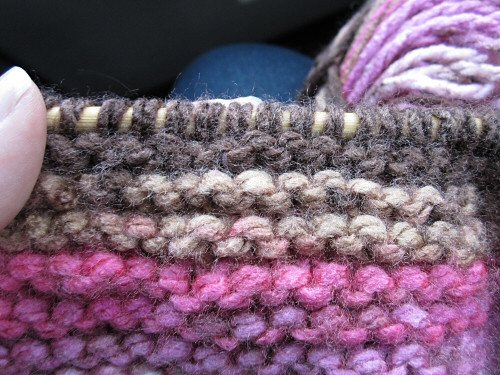
My tensioning gets tighter as I go as well. I think I struggled with this the most even more so than holding the needles. My stitches were loose in the beginning and would easily fall off the needle, as well as looked sloppy…with practice they got better & will continue to get better.
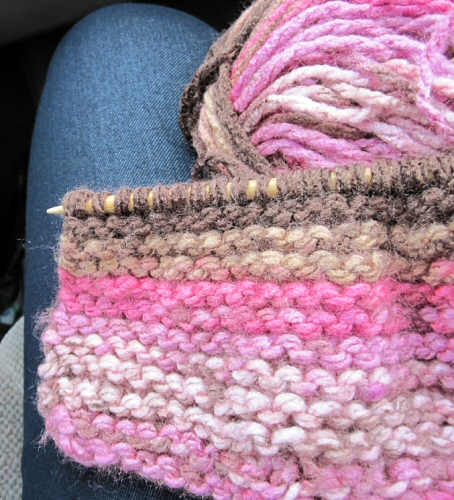
See how loose the stitches are at the bottom…

I keep this project in the car & work on it while we are away. Obviously, I am not the one driving. 😉 I love being able to have something to do with my hands…jewelry making was never a practical traveling project for me since I work with beads. I love how easily yarn & needles tuck into a bag. “But what are you making?” My husband says. He only pictures knitted socks & hats! For now, I think I will stick to making blankets for my girls’ dolls. 🙂 When this is done I’ll try a different stitch to make another one. Those dolls will be nice & warm. 😉 Once the movement becomes totally natural with a variety of stitches I will then tackle an actual project…other than just square objects. 🙂
So I am finding knitting, now that I don’t have to think so much & the feel is natural, very soothing & satisfying. I wondered if the repetitive motion would bore me but I found just the opposite. Interested in seeing if other stitches feel as natural, or what actual projects I will be inspired to do.
I couldn’t tell you if I knit in the “English” or “Continental” method. Or even if my form is correct – hell, even if it looks correct. All I know is, in my hand, it feels right, and that’s all that matters. If there is a new project that you want to take on but you are intimidated because you may not do it “just so” or the “right way” – what makes it right is if it is right for you. Make it your own…Own it! Make 2011 your year to try something you’ve always wanted to do! 🙂
